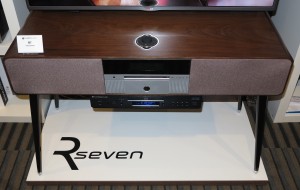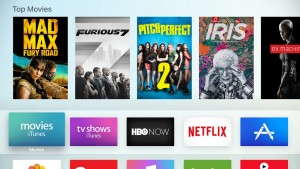Articles – From the horse’s mouth

You may find that the Internet radio service is not working if you are using the vTuner Internet-radio directory used by most Internet radios
Frontier Silicon
Support Notice regarding changeover (English language / Deutsche Sprache / Langue Française)
Airable by Tune In Gmbh
Product Page regarding Internet radio directory service
Message From The Team (Press Release)
My Comments
Recently, it has been found that vTuner, the Internet-radio directory used by many Internet radios and audio equipment with that functionality including the ones previously reviewed on this Website, has become unreliable as a service. This has caused some of the set manufacturers to receive user complaints about their products through their product-support contact paths.
These manufacturers and Internet-radio platform providers like Frontier Silicon have found that they can’t assure their end users can benefit from proper service continuity. So they are changing their Internet-radio and audio-on-demand service provider to Airable by Tune In. This German company is a different company to the TuneIn Radio app and Website we commonly use to bring Internet radio to our computers, smartphones and tablets.

Check the update options in your Internet radio’s menus for any directory service updates
In a lot of cases, the manufacturer will supply a firmware update which may be delivered via the Internet connection or as a downloadable software package to be transferred to the Internet-radio device via a USB memory stick. Devices based on the Frontier-Silicon platform which includes Roberts, Bush, Kogan, Ruark, Revo or Sangean equipment will simply take on a small configuration update which may require the set to be turned off then on for it to be implemented.
There will be some older audio-equipment models, mainly “big sets” (hi-fi equipment, stereo systems and the like) offered by some of the big names, that may not be able to be updated to newer Internet-radio services. In most cases, these units will lose Internet-radio functionality and this is due to a traditionalist approach towards managing “end-of-life” models by these brands.

The same issue will also apply with equipment like the Ruark R7 Radiogram
If your device is based around a mobile-platform app, something that would be common with Wi-Fi-based multiroom speakers, you may have to update your app from the mobile platform’s app store. Typically this is facilitated using the “Update” option within the app-store menu. The same issue also applies to smart TVs, set-top boxes, games consoles, mobile-platform apps and the like whereupon you would have to visit the platform’s app store or download location to obtain an app update or a substitute Internet-radio app.
Other than that, check with your set’s manufacturer’s support Website for any software updates if you have found that you aren’t benefiting from Internet-radio service continuity.
Once the firmware update or configuration update has completed, you will find that the menu tree for your equipment’s Internet-radio or online services mode has been revised. You will also find that you will have to store your favourite stations using your set’s preset buttons rather than an online resource. This means you will have to rely on your set’s preset-station functionality for this purpose.
Since 5 August, Frontier Silicon have built up a new Web portal for you to manage your favourite stations in addition to using your set’s preset-station buttons. This will work with devices based on their platform like Bush, Roberts, Ruark or Kogan sets that are updated to use Airable.
Speaking of which, you may have to reallocate your favourite Internet-radio stations to your set’s preset buttons. This is because these buttons keep a reference to the station’s entry to the Internet-radio-directory-service’s directory rather than the full URL for that online stream. For example, a reference to Heart London’s Internet stream as a preset button on your set may only point to the reference in the vTuner Internet-radio directory which has all the stream addresses for that “turn up the feel good” London pop-music radio station. But this station would be under a different reference with Airable or another directory.

Some of these sets may not be able to benefit from Internet radio thanks to the manufacturer not supplying further software updates
Airable were even stating in their latest press release that they were on the receiving end of various support tickets as each brand was switching over to them to provide Internet-radio service continuity. They were even finding that they had to claw through the support requests while the switchovers were taking place.
If you discover a new online media resource, you may have to share the resource’s stream URL for audio streams or RSS Webfeed URL for podcasts to Airable’s “suggest content” page. This will be something that podcasters and new Internet-radio broadcasters will have to do as they come on board with online content.

The same issue about Internet radio service continuity can apply to smart TVs, set-top boxes and game consoles that implement an Internet radio app
Companies who are using the Airable internet-radio-directory service on their products have the ability to “link” with audio-content services that implement the Airable.API interface. Here, it avoids the need to add to their device’s firmware many software “hooks” to allow the online service to be available from that device’s control surface. It also avoids the need to refresh device firmware if the content directory has to be amended.
What may also have to happen is for the Airable API to implement RadioDNS as part of their directory and software. It is becoming important where the Internet radio concept is very much about “hybrid radio” operation with “single-dial” tuning and rich displays along with the classic view of Internet radio as the “new shortwave”.
The changeover will take time to complete and will yield useability problems but it will, in most cases, be about continuing to listen to Internet radio. At the same time, Tune In will have to scale up their servers to answer increased demand and keep investing in their service all the time to avoid becoming oversubscribed or running on old data.
Update: 8 August 2019 – Frontier Silicon rebuilding their favourite-stations Web portal that works with Airable for their Internet-radio platforms.


















